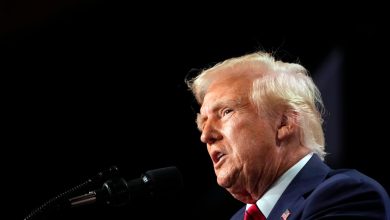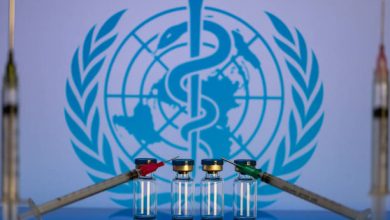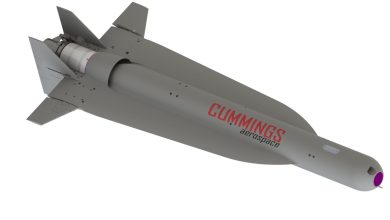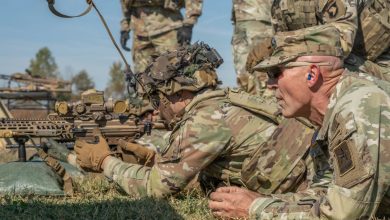Australia-based Marines ready for crisis response, regional tensions
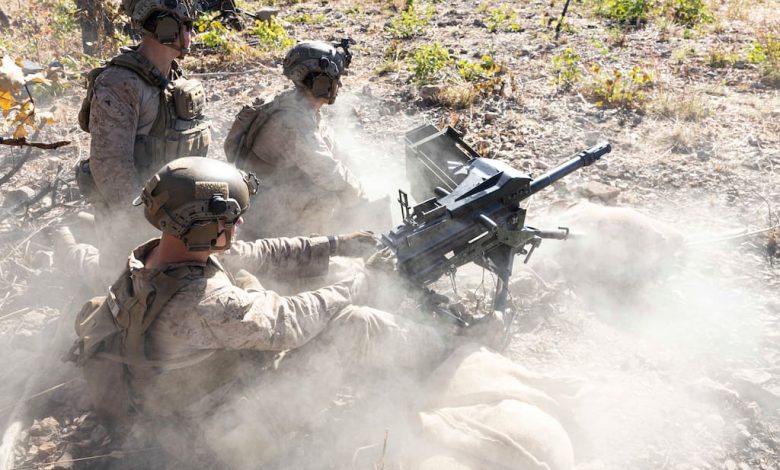
Northern Australia played host to two major multilateral military exercises in July — and the U.S. Marine Corps was in the thick of the action for both.
The Marines’ participation in the air-focused Exercise Pitch Black and the ground- and sea-based Exercise Predator’s Run was thanks to the presence of the Marine Rotational Force-Darwin, or MRF-D, an annual April to October deployment of Marines to the largest city in Australia’s Northern Territory.
The deployment marked the 13th rotation of Marines to Australia, Col. Brian Mulvihill, the commanding officer of MRF-D, told Marine Corps Times. Beginning with just a company’s worth of personnel in 2012, the rotation now comprises a full Marine Air-Ground Task Force, or MAGTF, containing approximately 2,000 Marines.
Darwin is a strategic location for the Corps. In fact, the northern city is closer to the South China Sea than it is to Australia’s capital of Canberra. So, what advantages does the location present?
“The first thing is a forward posture, a crisis response force. The Marine Corps prides ourselves on being America’s 911 force,” Mulvihill said. “We have a force that has, first and foremost, the ability to respond to a crisis across any spectrum. Being forward-postured with the capability of the Osprey, where you can do long-range flights — especially when you incorporate refuellers — extends the operational reach of the unit to be able to respond to crises.”
This crisis response force is thus ideally positioned west of the International Dateline. For example, it was on standby in May to support Papua New Guinea after a deadly landslide.
“Secondly, under the force posture agreement with the Australian government from 13 years ago — partnering with the Australian Defence Force as a key ally in the region and gaining interoperability between our militaries is one of our key objectives,” Mulvihill continued.
Working toward that goal of interoperability, the Marine Corps is slated this month to embark three Osprey aircraft aboard the Australian amphibious ship Canberra. An infantry company is expected to embark shortly after that.
Although MRF-D is garrisoned across a handful of Darwin locations, the main force is co-located with the Australian Army’s 1st Brigade at Robertson Barracks.
The proximity is ideal, Mulvihill pointed out, considering the Marines’ training aligns with the host nation’s use of a building block approach. Small-unit training is a constant, and the MAGTF conducts a dozen major exercises with Australia and neighboring countries during its six-month rotation.
The opportunity to train with others is an important ingredient of the Australia rotations, explained Mulvihill, who normally commands the 5th Marine Regiment at Camp Pendleton, California. “It’s critical to bring stability to the region, to work with those partners that are here. They work here all year round — they’re the experts, so we learn from them as much as they learn from us.”
The phrase “free and open Indo-Pacific” is often bandied about, so does MRF-D contribute to that?
“Absolutely!” Mulvihill said. “I mean, the idea that we have 2,000 Marines deployed forward, and we can partner over the six months that we’re here with those other forces and learn from each other and interoperate — it absolutely contributes to regional stability.”
Unlike the 31st Marine Expeditionary Unit forward-deployed on Okinawa, Japan, MRF-D is not a standing formation. The commander explained that, three years ago, responsibility for MRF-D shifted from III Marine Expeditionary Force to I MEF.
“This is the third time we’ve deployed a MAGTF from I MEF at Camp Pendleton,” he said, “and it rotates between 1st and 5th Marines.”
But flexibility remains key. This year, because of “global force requirements in other regions,” MRF-D was assigned 10 MV-22B Ospreys from III MEF’s Marine Medium Tiltrotor Squadron 268, based out of Hawaii, rather than a I MEF squadron.
Naturally, MRF-D is a long way from home, but the Marine commander noted that “challenges can also be opportunities.”
“In the Northern Territory, huge, expansive distances force us to really practice our long resupply missions, assault support from our MV-22s [and] how we move large formations over those great distances,” he said.
These Marine rotations, meanwhile, are present only during Australia’s dry season, since Darwin’s tropical climate prevents elements of training the rest of the year. However, much of the equipment used remains there all year, maintained by a rotational force of 200 Marines from the Ground Equipment Staging Program.
Asked what the deployed Marines think of this particular rotation — and of Australia itself — Mulvihill beamed.
“Marines love this deployment,” he said, adding that these troops seldom get to experience anything like it. The deployment even contributes to some Marines’ desire to reenlist.
“It’s amazing the welcome and the reception we get!” Mulvihill said of Darwin. Speaking more about the region, the Marine commander also highlighted the region’s “incredible” Indigenous culture.
Whether future rotations of Marines to Darwin will look different than current efforts remains to be seen, but Mulvihill said the deployment rhythm is presently “in a good spot.”
“One year might have attack helicopters, one year they may not,” he said. “So, it’s just really small refinements at this point, and it’s based on not just what we’re doing here, but what the Marine Corps can source and how we can train other units and distribute resources across all the units in the Marine Corps.”
HIMARS may be a future asset as well, he predicted.
Closing the discussion, Mulvihill emphasized the importance of “a forward-postured MAGTF, with all the capabilities we bring” providing a regional crisis response capability.
“The INDOPACOM commander knows that it has a fully deployed Marine Air-Ground Task Force that can respond to a crisis if called upon or asked by an embassy or sovereign nation,” he said.
Gordon Arthur is an Asia correspondent for Defense News. After a 20-year stint working in Hong Kong, he now resides in New Zealand. He has attended military exercises and defense exhibitions in about 20 countries around the Asia-Pacific region.


